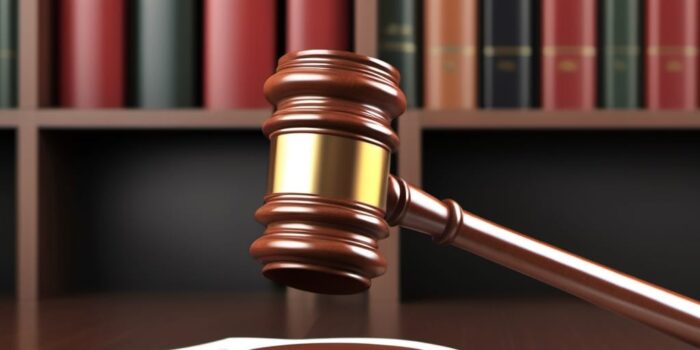A Statement of Truth, in the context of legal proceedings, is a formal declaration made by a party or their legal representative, asserting that the facts stated in a document are true to the best of their knowledge, belief, and understanding. This seemingly simple declaration carries significant weight and implications in the legal world, and understanding its nuances is crucial for anyone involved in legal proceedings.
This article aims to provide a comprehensive understanding of the Statement of Truth, its importance, implications, and the potential consequences of misuse. We will delve into the intricacies of this legal instrument, shedding light on its various aspects, from its historical origins to its practical applications in today’s legal landscape.
Origins and Purpose of the Statement of Truth
The Statement of Truth has its roots in the common law tradition, where truthfulness and honesty in legal proceedings have always been of paramount importance. The concept evolved over time, eventually taking the form of a formal declaration in legal documents, affirming the veracity of the facts stated therein.
The primary purpose of the Statement of Truth is to ensure the integrity of legal proceedings. It acts as a safeguard against false claims and dishonest practices, holding parties accountable for the information they present before the court.
Historical Context
The concept of swearing to the truth of a statement has been a part of legal systems for centuries. In ancient times, oaths were often taken before deities, invoking divine punishment for falsehoods. This practice evolved over time, with the modern Statement of Truth serving a similar purpose, albeit in a secular context.
Over the years, the Statement of Truth has become a standard requirement in many legal systems, reflecting the universal importance of truthfulness in legal proceedings.
Modern Usage
Today, the Statement of Truth is a fundamental part of legal documentation in many jurisdictions. It is typically required in pleadings, witness statements, and other court documents. The exact wording and requirements may vary, but the underlying principle remains the same: to affirm the truth of the facts stated in the document.
The Statement of Truth serves as a reminder of the seriousness and gravity of legal proceedings, reinforcing the obligation to present accurate and truthful information to the court.
Form and Content of the Statement of Truth
The form and content of the Statement of Truth can vary depending on the jurisdiction and the type of document in which it is included. However, there are common elements that are generally present in most Statements of Truth.
Typically, a Statement of Truth is a succinct declaration, usually placed at the end of a document, affirming that the facts stated in the document are true. It is usually signed by the party or their legal representative, signifying their acceptance of the declaration.
Standard Wording
While the exact wording of the Statement of Truth can vary, there is often a standard form that is commonly used. For example, in England and Wales, the standard wording for a Statement of Truth in a witness statement is: “I believe that the facts stated in this witness statement are true.”
The wording is designed to be clear and unambiguous, leaving no room for doubt about the declaration being made. It is important to note that the Statement of Truth must be signed by the person making the declaration, not by someone else on their behalf.
Placement in the Document
The placement of the Statement of Truth in a document is also important. It is usually placed at the end of the document, following the substantive content. This is to ensure that it clearly applies to all the facts stated in the document.
Placing the Statement of Truth at the end of the document also serves a practical purpose. It allows the person signing the document to review all the facts stated in the document before making the declaration, reducing the risk of inadvertent errors or omissions.
Legal Implications of the Statement of Truth
The Statement of Truth carries significant legal implications. By signing a Statement of Truth, a party is effectively putting their credibility on the line. If it is later found that the facts stated in the document are false, the party could face serious consequences.
These consequences can range from penalties imposed by the court, such as fines or imprisonment, to professional sanctions for legal practitioners. The severity of the consequences often depends on the nature and extent of the falsehood, as well as the impact it has had on the proceedings.
Perjury and Contempt of Court
One of the most serious consequences of making a false Statement of Truth is the potential for charges of perjury or contempt of court. Perjury is a criminal offense, involving the making of a false statement under oath. Contempt of court, on the other hand, involves conduct that interferes with the administration of justice, including making false statements to the court.
Both offenses carry serious penalties, including fines and imprisonment. The exact penalties can vary depending on the jurisdiction and the specific circumstances of the case.
Professional Sanctions
For legal practitioners, making a false Statement of Truth can also lead to professional sanctions. These can include disciplinary action by the relevant professional body, such as suspension or disbarment, as well as reputational damage.
These sanctions serve to uphold the integrity of the legal profession and to deter dishonest practices. They also underscore the importance of truthfulness and accuracy in legal proceedings.
Conclusion
The Statement of Truth is a fundamental aspect of legal proceedings, serving as a safeguard against false claims and dishonest practices. Its importance cannot be overstated, and understanding its implications is crucial for anyone involved in legal proceedings.
While the Statement of Truth may seem like a simple declaration, it carries significant weight and potential consequences. It is therefore essential to approach it with the utmost care and diligence, ensuring that all facts stated in a document are accurate and truthful to the best of one’s knowledge and belief.
Take the Next Step with Clear Legal
Understanding the gravity of a Statement of Truth is just the beginning. At Clear Legal, we’re committed to guiding you through the complexities of legal proceedings with honesty, innovation, and the highest quality of service. Our values are not just words; they are the principles that drive us to ensure you receive the best legal support. If you’re seeking clarity and a partner that upholds the same ethical standards you do, we invite you to request a free consultation today and experience the Clear Legal difference.





